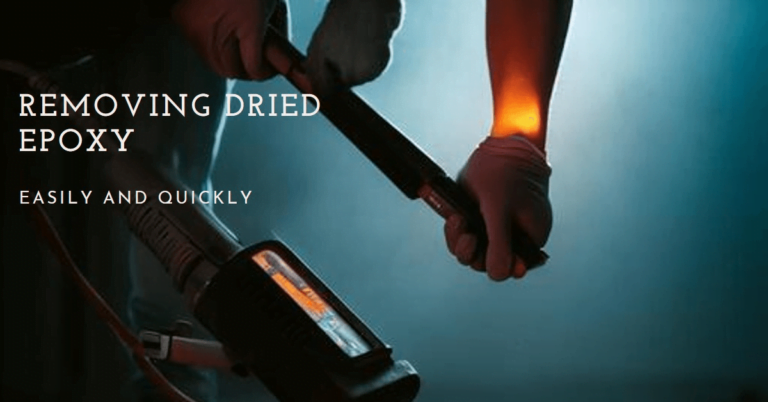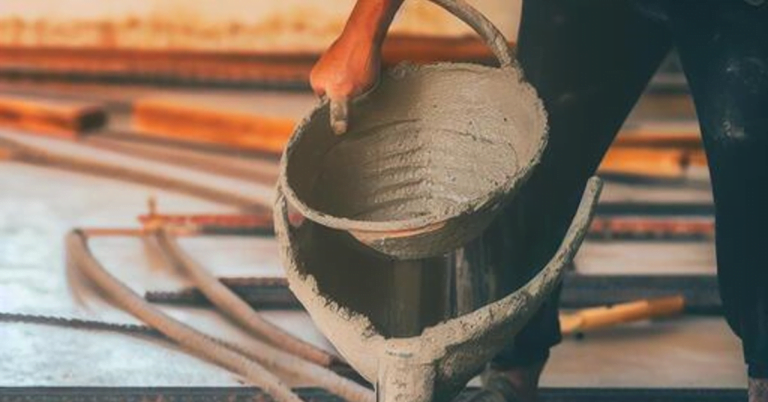How To Remove Glue From Concrete Floor
If you’re renovating an old office or home, you might find yourself dealing with an outdated adhesive on the concrete…
If you’re renovating an old office or home, you might find yourself dealing with an outdated adhesive on the concrete floor. Removing glue from a concrete floor can be a daunting task, but with the right tools and techniques, it can be accomplished efficiently.
In this article, we’ll provide a step-by-step guide on how to remove glue from a concrete floor, including identifying the type of glue, preparing the area for removal, using heat to loosen the glue, applying chemical solvents, and scraping and cleaning the surface.
The first step in removing glue from a concrete floor is to identify the type of glue you’re dealing with. Different adhesives require different methods of removal, and using the wrong method could cause damage to the surface. Once you’ve identified the adhesive, you can proceed with the appropriate removal method.
In the following sections, we’ll provide detailed instructions for each step of the process. With a little patience and elbow grease, you can remove the glue and restore your concrete floor to its former glory.
Identifying the Type of Glue
Let’s figure out what kind of sticky stuff we’re dealing with so we know how to get rid of it for good! Identifying the type of glue is the first step in removing it from a concrete floor.
Common adhesives used on concrete floors include carpet glue, tile glue, and construction adhesive. Each type of adhesive requires different removal methods, so it’s important to identify the type of glue before attempting to remove it.
One way to identify the type of glue is by checking the label or packaging of the adhesive used. If the glue is still in its original container, read the label to determine what type of adhesive it is. If the label is missing or you’re unsure, try to identify the adhesive by its appearance and texture.
Carpet glue is typically yellow or brown and has a tacky texture, while tile glue is often white or gray and has a smoother texture. Construction adhesive may be clear or yellow and has a thick, sticky consistency.
If you’re still unsure what type of glue you’re dealing with, you can conduct a simple test to identify it. Apply a small amount of acetone or rubbing alcohol to a cotton ball or rag and rub it on the glue. If the glue dissolves or becomes sticky, it’s likely a solvent-based adhesive like carpet or tile glue. If the glue doesn’t dissolve, it may be a water-based adhesive like construction adhesive.
Knowing the type of glue will help you choose the right removal method and avoid damaging your concrete floor. Identifying the type of glue may take some time and effort, but it’s an important first step in removing it from your concrete floor.
By using common adhesives and testing methods, you can determine what type of glue you’re dealing with and choose the best removal method for your specific situation. Once you’ve identified the glue, you can move on to the next step of removing it from your concrete floor.
Preparing the Area for Removal
Before you start, make sure to clear and clean the space where you’ll be working to ensure a smooth and efficient process. This means removing any furniture, objects, or debris that may obstruct your movement. You don’t want to accidentally trip over something while handling chemicals or tools.
Moreover, make sure to protect the surrounding surfaces from accidental spills or splatters. You can cover them with plastic sheets or newspapers to avoid damaging them.
Surface protection is essential when removing glue from a concrete floor. Some chemicals and tools can damage the floor if not used correctly. For example, if you’re using a scraper or a chisel, make sure not to apply too much pressure as it may create scratches or dents on the concrete surface.
Moreover, if you’re using chemicals, make sure to read the label carefully and follow the instructions. Some chemicals may react with the concrete, causing discoloration or degradation.
Safety precautions are also crucial when removing glue from a concrete floor. Some chemicals emit toxic fumes that may harm your health if inhaled. Therefore, make sure to wear protective gear such as gloves, goggles, and respirators.
Moreover, work in a well-ventilated area to avoid exposure to harmful vapors. If you’re using tools such as a scraper or a chisel, make sure to handle them with care and avoid cutting yourself. By following these safety measures, you can ensure a safe and effective glue removal process.
Using Heat to Loosen the Glue
If you’re looking for a quick and effective way to loosen stubborn adhesive, using heat can be a game-changer. Not only is it a simple and affordable method, but it also works well for most types of glue.
Benefits of using heat include not having to use harsh chemicals or tools that can damage your concrete floor. It’s also an eco-friendly way to remove glue, as you don’t have to dispose of any chemical waste. However, it’s important to take safety precautions when using heat to remove glue from your concrete floor.
First, make sure you wear protective gear such as gloves, goggles, and a respirator mask. This will protect you from any harmful fumes that may be released during the process. Second, keep a fire extinguisher nearby just in case the heat source accidentally comes into contact with anything flammable. Third, avoid using open flames to heat the glue as it can be dangerous and potentially cause a fire.
To use heat to loosen the glue, you can either use a heat gun or a hair dryer. Hold the heat source over the glue for about 30 seconds to a minute, or until the glue starts to soften. Then, use a scraper to remove the adhesive from the concrete floor. Repeat the process until all the glue is removed.
Remember to keep the heat source moving to prevent damage to the concrete floor, and to take breaks as needed to avoid overheating the tool. Using heat to remove glue from your concrete floor can be a safe and effective method, as long as you take the necessary precautions.
It’s important to wear protective gear, avoid using open flames, and keep the heat source moving to prevent damage to the floor. By following these guidelines, you can successfully remove the adhesive and restore your concrete floor to its original state.
Applying Chemical Solvents
You can make the process of getting rid of sticky residue from your flooring even easier by applying chemical solvents that break down the adhesive. Alternative methods, such as using heat or scraping, can be time-consuming and labor-intensive.
Chemical solvents are a quick and efficient way to remove glue from concrete floors. When choosing a chemical solvent, it’s important to consider safety precautions. Many solvents contain harsh chemicals that can cause skin irritation or respiratory issues.
Make sure to wear protective gloves, goggles, and a mask when applying the solvent. Also, be sure to work in a well-ventilated area to prevent the buildup of harmful fumes. To apply the solvent, first, test a small area of the floor to ensure that it does not cause any damage or discoloration.
Then, apply the solvent generously to the affected area and let it sit for a few minutes. Use a scraper or a stiff-bristled brush to work the solvent into the glue and loosen it from the floor. Once the glue has been removed, clean the area with a damp cloth and allow it to dry completely.
Scraping and Cleaning the Surface
Now it’s time to grab your scraper and get to work, scraping off any remaining residue left on the surface of your flooring. This step is crucial in ensuring that the concrete floor is free from any leftover glue or adhesive. If you skip this step, you may end up painting over residue which can result in an uneven surface and a poor finish.
Additionally, if you’re repairing damaged concrete, it’s important to have a clean surface before you start any repairs. Start by using a scraper to remove as much of the glue as possible. You may need to use a bit of elbow grease to get the job done, but it’s worth it in the end.
Once you’ve removed as much of the glue as possible, use a cleaning solution to remove any remaining residue. There are many commercial cleaning products available that are specifically designed for removing glue from concrete floors.
After you’ve scraped and cleaned the surface, it’s important to rinse the area thoroughly with water. This will ensure that any remaining residue or cleaning solution is completely removed. Once the area is dry, you can then proceed with any repairs or painting that you need to do.
Remember, taking the time to properly prepare the surface will result in a much better finished product.
Conclusion
In conclusion, removing glue from a concrete floor may seem like a daunting task, but with the right tools and techniques, it can be done efficiently and effectively.
First, it’s important to identify the type of glue that’s on the floor, as this will determine the best approach for removal.
Then, take the necessary steps to prepare the area, including protecting surrounding surfaces and ensuring proper ventilation.
Using heat or chemical solvents can help loosen the glue, but be sure to follow safety precautions and manufacturer instructions carefully.
Finally, use a scraper and cleaning solution to remove any remaining residue and restore the surface to its original state.
With patience and attention to detail, anyone can successfully remove glue from a concrete floor.


